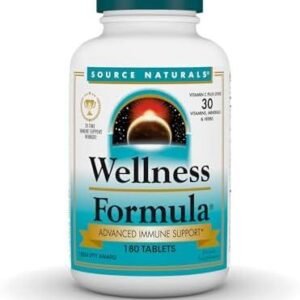Unlocking the Benefits of Low-Intensity Steady State (LISS) Workouts
In the ever-evolving world of fitness, where high-intensity training often steals the spotlight, it’s easy to overlook the undeniable power of a more gentle approach. Enter Low-Intensity Steady State (LISS) workouts—a training method that blends effectiveness with accessibility, making it a perfect fit for a wide range of fitness enthusiasts, from beginners to seasoned athletes. But what exactly is LISS, and why is it gaining traction in fitness circles? In this article, we’ll delve into the unique benefits of LISS workouts, exploring how they can enhance cardiovascular health, promote fat loss, and provide a sustainable workout routine without the burnout. Whether you’re looking to diversify your fitness regimen or find a new way to stay active, understanding the advantages of LISS may just unlock a more enjoyable and effective path to achieving your health goals. Join us as we uncover the science behind this low-impact approach and how it can transform your fitness journey.
Table of Contents
- Understanding Low-Intensity Steady State Workouts and Their Benefits
- Incorporating LISS into Your Fitness Routine: Practical Tips for Success
- Maximizing Results: Nutrition and Recovery Strategies for LISS Training
- Breaking Down Myths: The Science Behind Low-Intensity Exercise Effectiveness
- In Conclusion
Understanding Low-Intensity Steady State Workouts and Their Benefits
Low-Intensity Steady State (LISS) workouts are a form of cardiovascular exercise designed to elevate the heart rate to a moderate level for an extended period. This type of training typically involves activities like brisk walking, light jogging, swimming, or cycling, maintaining a steady pace that allows for conversation. The beauty of LISS lies in its accessibility; almost anyone can incorporate it into their routine, regardless of fitness level. It not only serves as a great entry point for beginners but also offers seasoned athletes a means of active recovery without excessive strain on the body.
Engaging in LISS workouts presents an array of benefits that support physical and mental health. Some notable advantages include:
- Enhanced Fat Burning: LISS promotes fat oxidation, making it an efficient choice for weight loss and body composition improvement.
- Improved Endurance: Sustained low-intensity efforts boost cardiovascular fitness, allowing for increased stamina over time.
- Reduced Risk of Injury: The gentler nature of these workouts minimizes wear and tear on the joints, especially beneficial for individuals recovering from injuries.
Incorporating LISS into Your Fitness Routine: Practical Tips for Success
Incorporating Low-Intensity Steady State (LISS) workouts into your fitness routine can be an effective way to enhance your overall health while also allowing for recovery and rejuvenation. To ensure you maximize the benefits, consider the following tips:
- Schedule Consistency: Aim to include LISS sessions several times a week. Consistent practice makes it easier to build endurance and integrate it seamlessly into your routine.
- Choose Enjoyable Activities: Whether it’s brisk walking, cycling, or swimming, pick a LISS activity that you enjoy to maintain motivation.
- Monitor Your Intensity: Keep your heart rate within the optimal range (about 50-65% of your maximum heart rate) to truly benefit from the low-intensity approach.
- Incorporate it with Other Training: Balance LISS with high-intensity workouts to diversify your routine and prevent burnout.
To make your workouts more engaging and effective, consider tracking your progress over time. A simple table can help you keep an eye on your sessions and improvements:
| Date | Activity | Duration (minutes) | Heart Rate (Average BPM) |
|---|---|---|---|
| 10/01 | Walking | 30 | 120 |
| 10/03 | Cycling | 45 | 125 |
| 10/05 | Swimming | 40 | 115 |
By keeping track of your LISS activities, you can assess your commitment and see clear progress over time. This not only boosts accountability but also adds a layer of personalization to your fitness journey.
Maximizing Results: Nutrition and Recovery Strategies for LISS Training
To truly enhance the effectiveness of your Low-Intensity Steady State (LISS) workouts, it’s essential to focus on your nutrition strategy. Fueling your body with the right nutrients can help optimize your performance and recovery. Consider incorporating the following guidelines into your meal planning:
- Balanced meals: Include a mix of carbohydrates, proteins, and healthy fats.
- Hydration: Drink plenty of water before, during, and after your workouts to maintain optimal fluid balance.
- Pre-workout snacks: Choose easily digestible carbs paired with protein, like a banana with almond butter.
- Post-workout recovery: Consume a meal rich in protein and complex carbohydrates to replenish glycogen stores and encourage muscle repair.
Recovery is just as crucial as the workout itself. Implementing effective recovery strategies can help minimize muscle soreness and improve overall performance in future sessions. Try incorporating the following practices:
- Active recovery: Engage in light activities on rest days, such as yoga or walking, to encourage blood flow and muscle relaxation.
- Stretching and foam rolling: Incorporate dynamic stretching before workouts and static stretching post-workout to enhance flexibility.
- Quality sleep: Aim for 7-9 hours of sleep per night to allow your body to repair and rejuvenate.
Breaking Down Myths: The Science Behind Low-Intensity Exercise Effectiveness
Low-intensity steady state (LISS) workouts have often been misunderstood, leading people to believe that only high-intensity training yields significant health benefits. However, recent studies reveal that LISS can be just as effective, particularly for those looking to improve cardiovascular health or maintain a sustainable fitness routine. The science behind LISS suggests that engaging in moderate exercises, such as brisk walking or cycling at a leisurely pace, fuels fat oxidation more efficiently in comparison to higher intensity workouts. This method also lowers the risk of injury, making it accessible for beginners or individuals recovering from strenuous physical activity.
Additionally, the mental and emotional benefits of LISS cannot be overlooked. Research indicates that low-intensity workouts help in
stress reduction,
enhanced mood, and
better sleep quality. Regular participation in LISS allows individuals to exercise consistently without overtaxing the body, cultivating a habit that leads to long-term fitness success. Below is a brief comparison of the advantages of LISS versus high-intensity workouts:
| Feature | LISS Workouts | High-Intensity Workouts |
|---|---|---|
| Injury Risk | Lower | Higher |
| Duration | Longer sessions | Shorter bursts |
| Fat Utilization | Higher | Lower |
| Mental Benefits | Improved mood | Endorphin rush |
In Conclusion
As we conclude our exploration of Low-Intensity Steady State (LISS) workouts, it’s clear that these exercise sessions offer a multitude of benefits suitable for a diverse range of fitness enthusiasts. From boosting cardiovascular health and enhancing fat oxidation to providing a sustainable exercise option for those seeking recovery, LISS proves that you don’t need to push yourself to the limit to achieve meaningful results.
Incorporating LISS into your routine can enhance your overall fitness strategy, serving as a perfect complement to higher-intensity workouts or as a standalone regimen for those prioritizing movement without excessive strain. Whether you’re just starting your fitness journey or looking to maintain a balanced approach, LISS workouts can play a pivotal role in achieving your goals.
Remember, consistency is key. By making LISS a regular part of your weekly routine, you’ll not only unlock its benefits but also cultivate a healthy and enjoyable relationship with exercise. So lace up your sneakers, find an activity you love, and embrace the steady pace of LISS. Your body—and mind—will thank you for it!
Thank you for reading, and don’t forget to share your experiences with LISS or any questions you may have in the comments below. Here’s to your health and fitness journey!




